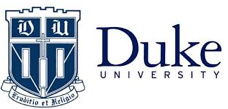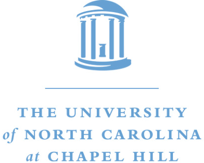
New market pressures, the pace of change in the digital space, the changing demographics of student and alumni populations are all significantly impacting the way higher education institutions engage with their constituent base. A focused marketing strategy has never been more important to meeting the goals at each institution.
CMG partners with higher education organizations to develop strategies that will help them differentiate, engage, fundraise and recruit. Whatever pressures an organization may face, marketers are expected to provide solutions. Solutions thare are cost effective, innovative and most importantly genuine. We help higher education marketers develop actionable strategies by combining our knowledge in the field of higher education marketing with the innovative marketing techniques of Fortune 1000 companies. This unique approach has helped us discover new strategies that enable higher education marketers to meet their goals.
A few of the institutions we have had the privilege of working with:




Students and alumni are inundated with communications while in school and post-graduation. Reaching them today requires more than execution of the traditional marcom calendar, it requires an innovative approach to traditional marketing communications efforts. Organizations should:
Higher-learning institutions, particularly for-profit, often have a mandate to support organizational growth. Marketers must identify and prioritize markets and products that best represent attractive expansion. Success requires agility and dynamic learning. No longer can institutions wait for a month long study on consumer preferences or quarter long in-depth understanding of market trends. Marketing executives must quickly:
Alumni play a significant role in the continued success of upholding an institutions mission. Understanding when and how to genuinely engage with these institutional evangelist is critical to sustaining success. Marketing executives should:
Knowing and tracking an academic brand extends beyond the university or college and into the individual school. The ability to understand brand and program attributes has implications that reach into recruiting academic staff, attracting students and fostering ongoing stewardship. Marketing executives should:

Focus on quality over quantity. Today, it’s not about doing more to reach those audiences, it’s about reaching them more effectively, with a message that resonates with their current relationship with your institution.
Start with Personas and Student Journeys. Spend the time developing a detailed understanding of these audiences (Personas) including their attitudes and behaviors, motivators and communication needs and preferences. Build their journey, whether enrollment or stewardship, and identify the stages and unique needs within each.
It’s really not all that different. Just like marketing a product or service, whether B2C or B2B, marketers need to find a way to differentiate themselves and more genuinely engage. Whether competing for new students or donor support, a marketer's ability to stay up to date with the latest available trends and technology, combined with consistent measurement and an agile strategy is critical to success.
While not insurmountable, misalignment among stakeholders tends to be a common hurdle in implementing a new strategy. Institutions are often very siloed in the way they operate. Traditionally schools and programs have dedicated teams working on individual marketing and communications efforts. Although efforts at the Institutional level appear unified, an approach to engaging with overlapping audiences across schools is not always clear – which can lead to competing priorities and communication fatigue.
We focus on collaboration and co-creation. We can coach and lead, or we can do the heavy lifting and then work with you to refine and adjust. We bring a diverse team to every engagement, leveraging experience that includes strategy, commercialization and performance analytics.
We customize our approach for each client to ensure we develop a strategy that is both actionable and sustainable. While the foundation of our strategy has been built over time we recognize the diversity of each institutions marketing culture. Our typical process takes approximately 8-12 weeks depending on the scope of the engagement and starts with an in-depth analysis of the stakeholder landscape and the various goals and objectives that exist. We then formulate ideas of what strategies may work and subsequently try to identify the headwinds and tailwinds the team will face when trying to implement the new strategy. Finally, we build an agile plan and highlight immediate steps to accelerate the deployment of the strategy.
Since 1998, CMG has collaborated with some of the world’s fastest-moving companies to achieve an uncommon ambition: Potential Realized. Our work has generated over $1 billion in revenue for Fortune 1000 companies. With inventive thinking, collaborative execution and agile response to fast-changing market dynamics, we move our clients up and to the right.
Copyright © 2015 CMG Partners, Inc.